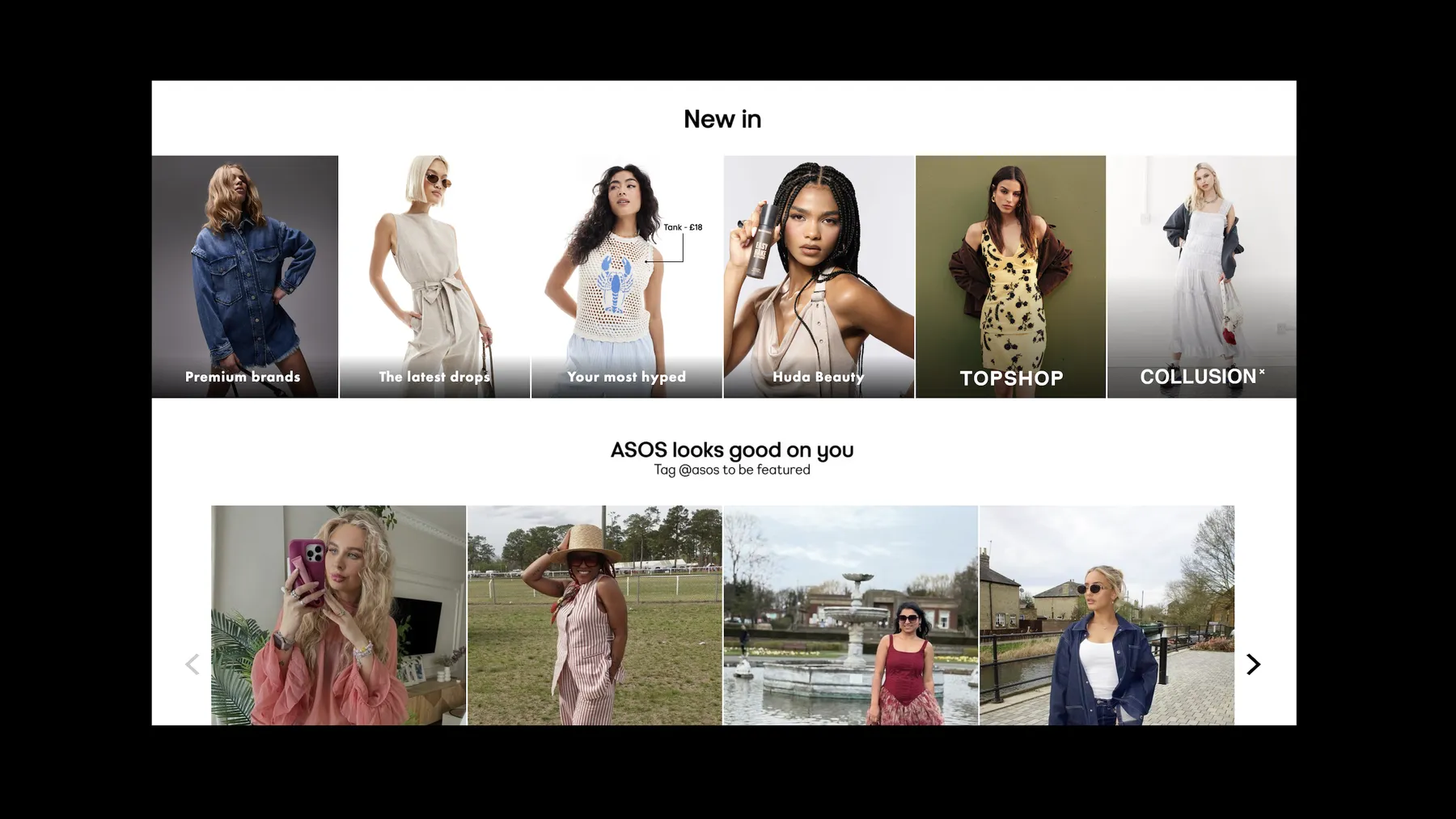Marketing Strategy
Branding
Activations
Social Media
Get to know us
The New Era of ROI-Centric Marketing Strategies


Jordan Stachini
Contents
Marketing used to be a numbers game – get your brand in front of as many eyes as possible and hope for the best. Sorry to be the bearer of bad news but it doesn’t work like that anymore. The modern approach is ruthless and precise, focusing on measurable impact rather than blind reach.
You have to make people feel something. Look at brands like Apple and Gymshark – they’ve created a movement. Their customers don’t just buy a product and call it a day. They’re part of a tribe, a mindset, a culture that makes them feel like they belong to something bigger than just a transaction. If you’re still throwing money at campaigns without knowing exactly what they’re doing for you, you’re doing it all wrong.
At co&co, we see it all the time, and we can spot exactly where things are falling apart. When we talk about ROI, we’re not just talking money – we’re talking about conversion. You’re probably tired of hearing us say this but it's a straight-up fact: All sales are conversions, but not all conversions are sales. Website traffic, content downloads, event sign-ups – these actions might not bring in dollars immediately, but if you’re serious about long-term brand growth, they’re just as important as direct sales. ROI should be at the core of everything you do. Let’s have a look at how things have changed in marketing overtime👇

Key Trends Shaping ROI-Centric Marketing
The marketing landscape is always shifting fast, and businesses that fail to adapt are gonna be forgotten. Here’s what’s shaking things up:
👉 AI & Automation – Machine learning is taking the guesswork out of targeting, optimising ad spend, and serving up hyper-personalised recommendations. But lads, don’t get lazy – AI is a tool, not a replacement for your marketing strategy. If you let it run the show unchecked, you’re asking for trouble.
👉 Predictive Analytics – Stop reacting and start anticipating customer behaviour. Smart businesses allocate budgets based on where the real money is going to come from.
👉 Omnichannel Strategies – A seamless experience across multiple platforms ensures that every interaction with your brand is positive.
👉 Influencer & UGC Marketing – Trust is currency. Leveraging user-generated content and influencer partnerships gives you measurable engagement and conversions.
Measuring Success Beyond Conventional Metrics
Something not a lot of people like to hear is that vanity metrics are just that: vanity. Likes, shares, and website traffic might make you feel good, but they don’t pay the bills. True ROI-driven marketing digs deeper into how customers interact with your brand and, more importantly, whether those interactions lead to revenue.
Essential ROI-Based Metrics to Track
If you’re serious about ROI metrics, these are the numbers that matter:
👉 Customer Lifetime Value (CLV) – Long-term profitability over quick wins.
👉 Customer Acquisition Cost (CAC) – If your cost to acquire a customer is too high, your strategy is broken.
👉 Return on Ad Spend (ROAS) – How much revenue are you actually pulling from your ad investments?
👉 Engagement-to-Conversion Rate – Are people just browsing, or are they actually taking action?
👉 Marketing Influenced Revenue (MIR) – How much money can you directly link to your marketing efforts?
Metric | ROI-Focused | Traditional |
CLV (Customer Lifetime Value) | ✅ | ❌ |
CAC (Customer Acquisition Cost) | ✅ | ❌ |
ROAS (Return on Ad Spend) | ✅ | ❌ |
Social Media Likes & Shares | ❌ | ✅ |
Website Traffic | ❌ | ✅ |
Leveraging Data for Smarter Decision-Making
The key to maximising ROI? Data. First-party data is your best friend – it tells you exactly who your customers are, what they want, and how they behave. AI-driven analytics refine your marketing spend, cutting waste and boosting efficiency. Brands that do this well are the ones who see results.
Personalising Campaigns for Better ROI
Generic marketing is dead. Consumers expect brands to get them. If your messaging isn’t tailored to their needs, they’ll move on. Personalised marketing is the difference between being remembered and being ignored. If we’re talking about personalisation in email for example – this doesn’t mean just throwing a first name into an email subject line and calling it a day. Anyone can do that. There’s a psychology to it. True personalisation means understanding your audience. It’s about serving the right message, at the right time, on the right platform, in a way that speaks to them.

Effective Personalisation Strategies
👉 Behavioural Segmentation – Know how different user groups interact with your brand and tailor your approach.
✅ Good Example: A fitness brand segments its audience into gym-goers, home workout enthusiasts, and runners, sending each group tailored content and product recommendations.
❌ Bad Example: Blasting the same generic protein powder ad to everyone, whether they lift weights, do yoga or sit on the couch all day.
👉 Dynamic Content Personalisation – Adapt messaging in real-time based on user data.
✅ Good Example: An e-commerce site changes homepage banners based on a user’s previous shopping habits, showing running shoes to someone who browsed them last week.
❌ Bad Example: Displaying a “Welcome, First-Time Shopper!” message to a customer who’s made multiple purchases.
👉 AI-Powered Recommendations – Serve up the right product or content at the right time.
✅ Good Example: A streaming service suggesting a new crime documentary because the user has been binge-watching true crime series.
❌ Bad Example: Recommending winter coats in July just because the customer once bought a scarf six months ago.
👉 Automated Email & SMS Campaigns – Deliver hyper-relevant messages based on real-time customer activity.
✅ Good Example: A fashion brand sending a “Back in Stock” alert for an item a customer had previously viewed but couldn’t buy.
❌ Bad Example: Sending a cart abandonment email for an item the customer already purchased.
👉 Predictive Personalisation – Anticipate customer needs before they even express them.
✅ Good Example: A travel site suggesting flight deals to a destination the user has been researching, just before holiday season kicks in.
❌ Bad Example: A skincare brand aggressively pushing anti-aging creams to a 20-year-old just because they once bought some SPF.

Case Study: ASOS – A Masterclass in Personalisation
When it comes to personalisation, ASOS is absolutely smashing it. The UK-based fashion giant is curating individual shopping experiences using smart, data-driven marketing. They’ve nailed everything from behavioural segmentation to predictive personalisation, and the results speak for themselves.

Behavioural Segmentation
ASOS understands that not all shoppers are the same. They categorise customers based on browsing history, purchase behaviour, and even fashion preferences. Whether you’re a streetwear lover, a luxury shopper, or someone who only buys basics, ASOS tailors its product recommendations accordingly.
✅ Example: If you frequently buy sustainable brands, ASOS will push more eco-friendly collections to the top of your homepage.
❌ What they don’t do: Show the same one-size-fits-all product selection to every shopper.
Dynamic Content Personalisation
The ASOS website and app are constantly changing based on user behaviour. If you’re a returning customer, the homepage, product recommendations, and even discounts adjust to reflect your shopping habits.
✅ Example: A returning visitor who previously browsed men’s trainers will see a homepage banner featuring the latest trainer drops.
❌ What they don’t do: Greet everyone with the same “New In” section, regardless of what they’re actually interested in.
AI-Powered Recommendations
ASOS uses AI to predict what you’re likely to buy next, based on your past behaviour and what’s trending among similar shoppers. This applies across product recommendations, “Shop the Look” features, and even size suggestions.
✅ Example: If you buy a dress, ASOS might recommend matching shoes and accessories in the checkout process.
❌ What they don’t do: Recommend a bikini in December after purchasing a winter coat.
Automated Email & SMS Campaigns
ASOS doesn’t just send out mass emails – they send hyper-relevant, timely messages that actually make sense. If you abandon your cart, you’ll get a reminder. If an item you loved is back in stock, they’ll let you know.
✅ Example: A personalised discount email for a product you’ve been eyeing but haven’t purchased yet.
❌ What they don’t do: Spam every customer with random promotions that have nothing to do with their shopping habits.
Predictive Personalisation
ASOS takes things one step further by anticipating customer needs before they even express them. They analyse browsing patterns, purchase history, and even seasonal trends to serve up timely and relevant content.
✅ Example: If you always shop for festival outfits in May, ASOS will start showing festival collections to you before you even start searching.
❌ What they don’t do: Push products that have no relevance to your past purchases or interests.
The Results?
This level of personalisation has helped ASOS keep their customers, increase conversions, and naturally, drive mad revenue growth. Customers keep coming back because they feel understood, not just sold to. That’s the power of personalisation done right. If you’re still treating all customers the same, then take this as your sign to stop. ASOS proves that personalisation is how you win.
ROI-centric marketing is the future. The brands that go far are the ones using data, automation, and personalisation to drive measurable outcomes. But AI is only as good as the people using it. If you let it take over without human oversight, you’re asking for generic, ineffective marketing. Traditional marketing is out. So if you’re still clinging to outdated metrics and broad, unfocused campaigns, you might as well say goodbye to any ROI altogether.
Want to boost your marketing ROI? co&co can help. Our no fluff, no-bull, data-driven strategies will make sure every dollar you spend actually works for you. Let’s work together.

Speak to Jordan today
Grab a brew. Have a read
You might also like...






